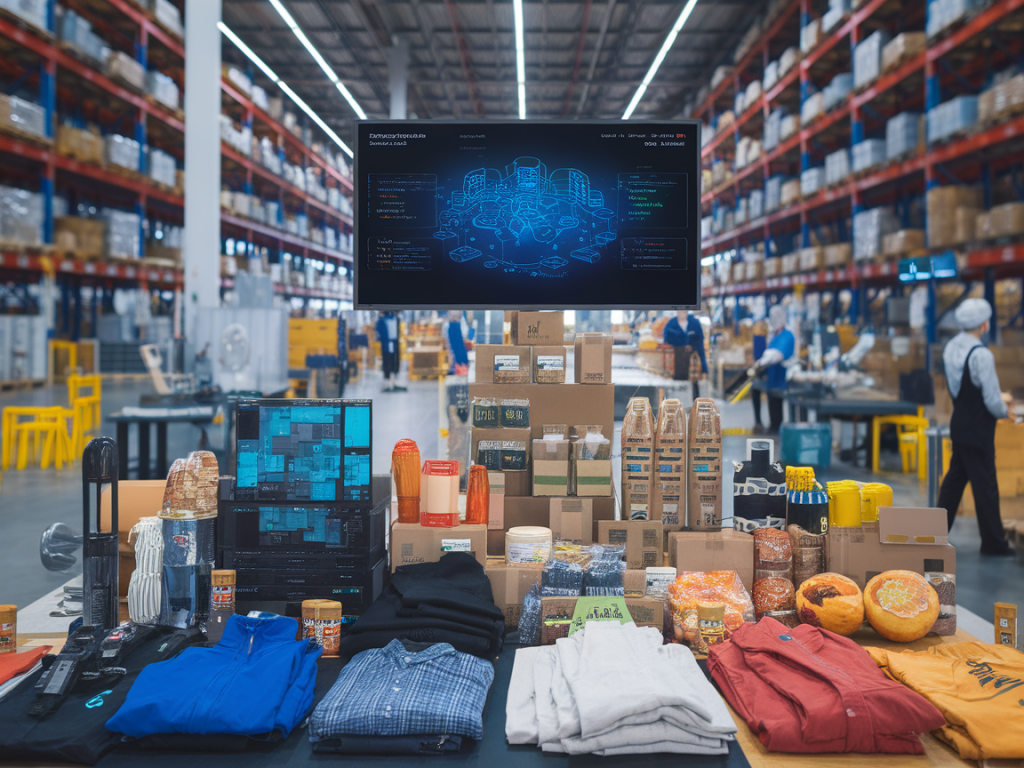
Understanding Blockchain and Its Basics
Let’s start with a simple question: What is blockchain? At its core, it’s a decentralized, transparent, and immutable ledger technology. Unlike traditional databases that are stored on centralized servers, blockchain operates on a network of computers or nodes. When a transaction or data entry occurs, it’s recorded on a “block” that’s linked to the previous ones via cryptographic methods, forming a “chain.” This seemingly simple concept has powerful implications for industries across the board, but today, I want to explore how it’s transforming traditional supply chain management.
If you’ve ever run or worked closely with supply chain systems, you know they’re complex, often fragmented, and riddled with inefficiencies. Tracking goods, verifying authenticity, managing documentation—these tasks can all suffer from human error, counterfeit risks, and data silos. This is where blockchain comes into play.
Enhancing Transparency in Supply Chains
One of the most talked-about advantages of blockchain is its transparency. Imagine being able to trace the lifecycle of a product from its origin to its final destination with complete accuracy. Blockchain enables this by creating a unified, tamper-proof record of transactions. Each stakeholder in the supply chain—manufacturers, suppliers, shippers, and retailers—can securely log information about their respective stages of handling.
Take, for instance, Walmart. The retail giant has utilized blockchain technology, in partnership with IBM’s Food Trust platform, to track the movement of food products. Previously, tracing the source of contaminated produce could take a week or more. With blockchain, Walmart can now accomplish this in a matter of seconds. This kind of traceability not only enhances food safety but also builds trust with customers who demand more transparency about where their products come from.
Combating Counterfeit Goods
Counterfeit goods are a huge issue in industries ranging from luxury fashion to pharmaceuticals. Blockchain provides an effective solution by ensuring product authenticity. Every transaction or change in product ownership can be securely logged, creating a digital trail that can be verified at any stage.
Let’s look at the pharmaceutical sector. Counterfeit medications can have life-threatening consequences. Companies like Pfizer have been leveraging blockchain solutions to authenticate drug shipments and fight against the distribution of counterfeit products. A verified digital ledger ensures that only genuine products reach the end consumer.
Streamlining Documentation
If you’ve ever dealt with supply chain logistics, you know how cumbersome the paperwork can be—bills of lading, certificates of origin, customs declarations, and so on. Manual documentation processes are not only inefficient but also highly prone to errors and fraud.
With blockchain, these documents can be digitized, stored securely, and accessed in real time by authorized parties. Maersk, in collaboration with IBM, has developed a blockchain platform called TradeLens. This platform digitizes the global shipping process, allowing for seamless sharing of shipping data. By replacing traditional paper-based systems with blockchain, Maersk estimates it has saved billions annually in operational costs.
Reducing Costs and Delays
Blockchains help cut down costs incurred due to intermediaries, while also speeding up processes. In traditional supply chains, various intermediaries—from freight forwarders to clearing agents—perform verification tasks, often resulting in delays and higher costs. Blockchain automates these verification and validation processes, reducing the need for third parties.
For example, companies like Unilever and Anheuser-Busch InBev have adopted blockchain-based smart contracts. These contracts automatically execute once predefined conditions are met, eliminating the need for manual oversight and late payments. The result? Faster transactions, lower overheads, and improved cash flow.
Promoting Sustainability
Consumers increasingly care about how their purchases impact the environment and society. Blockchain can help companies demonstrate their commitment to sustainability by making the entire supply chain visible and accountable. Customers can verify whether raw materials are ethically sourced or whether suppliers adhere to environmental regulations.
A compelling example is Everledger, a blockchain platform that tracks the provenance of diamonds. By using a digital blockchain record, Everledger ensures that diamonds are conflict-free and ethically sourced, addressing a major ethical concern within the jewelry industry.
Challenges to Adoption
While the potential of blockchain in supply chain management is vast, it’s worth acknowledging the challenges to its widespread adoption. For one, implementing blockchain technology isn’t cheap. Companies need to invest in infrastructure, employee training, and system integration. This can be a barrier for smaller businesses with limited budgets.
Additionally, interoperability is a concern. Different companies in the supply chain may use different blockchain platforms, making it difficult for them to interact seamlessly. Standardization efforts are underway, but they’ll take time to mature.
Finally, regulatory frameworks around blockchain remain a gray area in many parts of the world. Issues like data privacy, jurisdiction, and liability need clearer guidelines before blockchain-based supply chain systems become mainstream.
Key Takeaways
If there’s one thing I know for sure, it’s this: Blockchain is fundamentally reshaping supply chain management. By increasing transparency, enhancing security, and driving efficiency, blockchain is turning traditional supply chains into agile, reliable, and sustainable ecosystems.
That said, the journey is still in progress. As adoption grows and challenges are addressed, blockchain will undoubtedly become a foundational technology in supply chain management, revolutionizing the way industries operate.
